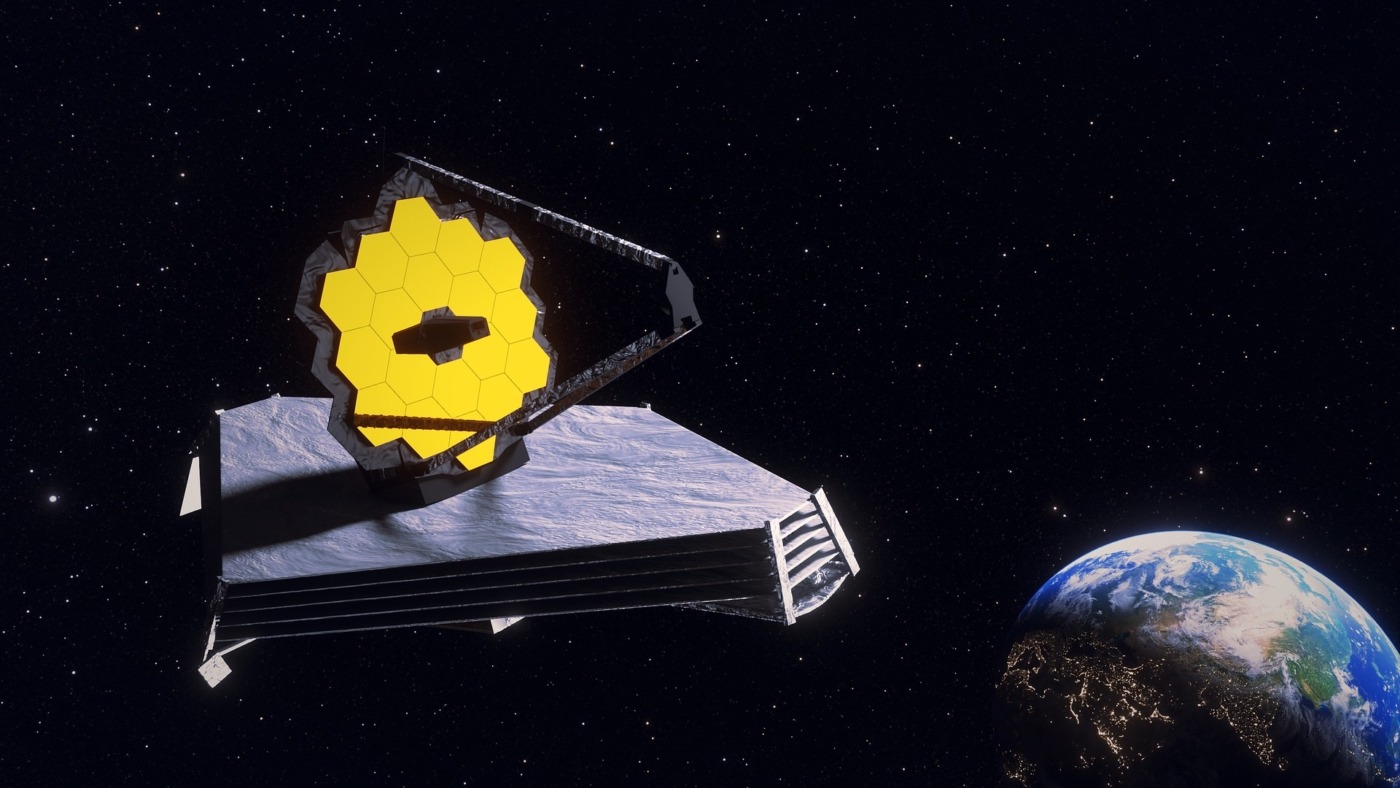The James Webb telescope launches into the unknown
One of the most exciting science stories of 2021 came on Christmas Day, with the launch of the James Webb Space Telescope (JWST). As I write this, the telescope is now on its way to a point nearly a million miles away from the Earth, and it’s engaged in the complex mechanical manoeuvre of assembling itself. When it is fully deployed, scientists predict that it will usher in a new age of astronomy. Sara Seager, a planetary scientist and astrophysicist at MIT, said: “The Webb represents the culmination of decades, if not centuries, of astronomy. We’ve been waiting for this for a very long time.” So what is the JWST, and why is it so important?
The ground-breaking Hubble Space Telescope launched in 1990, but scientists were already thinking about a follow-up long before it ever left our planet. The JWST has already surpassed Hubble in terms of price – it costs around $10 billion – and it’s one of humanity’s most ambitious ever engineering projects. And, if it works properly, it could surpass the original space telescope in terms of what it reveals about our universe. Caitlin Casey, assistant professor of astronomy at the University of Texas, notes: “We’re going right up to the edge of the observable universe with Webb. And yeah, we’re excited to see what’s there.”
“The James Webb Space Telescope was designed to capture the extremely faint radiation emission from the first generation of galaxies” – Oliver Krause
The journey to its ultimate destination, the second Lagrange point (or L2), will take 29 days, with more than 300 potential ‘points of failure’ along the way. It has already deployed its tennis court-sized sun shield, which will shade the JWST from radiation and cool the environment around its instruments to below minus 230°C. It is a cold telescope, and it requires this shield to work effectively. It has deployed some mirrors and will continue to deploy until its 18 hexagonal segments (made of beryllium and coated in gold) will resemble a giant honeycomb. Two weeks later, it will reach L2, and then engineers will require four to six months for the segments to be aligned correctly and cooled sufficiently to be operational.
Oliver Krause, of the Max Planck Institute for Astronomy, has identified two areas in particular into which he hopes the JWST will provide further insight: “Observing the first galaxies in the universe shortly after the Big Bang and studying the atmospheres of extrasolar planets. From the outset, the James Webb Space Telescope was designed to capture the extremely faint radiation emission from the first generation of galaxies, which must have formed 100 to 200 million years after the birth of the universe. Because of the cosmic redshift into the infrared range, only the JWST has sufficient sensitivity to detect these objects from the cradle of our universe and to study them in detail.”
The ultimate goal of this second mission is to find a planet similar to the Earth, but it’s an unlikely outcome
On exoplanets, Krause adds: “After an epoch of discoveries, we can now study the atmospheres and origins of these objects in detail. The James Webb Space Telescope will play a crucial role in studying the chemical composition and physical conditions in the gas envelopes of such distant worlds.”
The ultimate goal of this second mission is to find a planet similar to the Earth, but it’s an unlikely outcome – they are likely to be rare in the solar system and very faint in comparison to the parent star. Most likely, it will study gas giants like Jupiter and Saturn or ice giants similar to Uranus and Neptune, exploring their more dynamic weather conditions.
Martin Barstow, professor of astrophysics and space science at the University of Leicester, said: “In addition to studying planets outside our solar system, JWST will be able to observe our home planetary system. Its great sensitivity will enable the identification and characterisation of comets and other icy bodies in the outermost regions of the solar system. In such a remote location, these objects are largely unchanged since their formation, and may contain clues to the origins of Earth.”
The JWST is an ambitious project that is likely to completely change our knowledge of astronomy, the things we know and the ways we think about our universe. Keep your eyes on it, because the discoveries – both anticipated and entirely unexpected – are likely to be incredible.


Comments